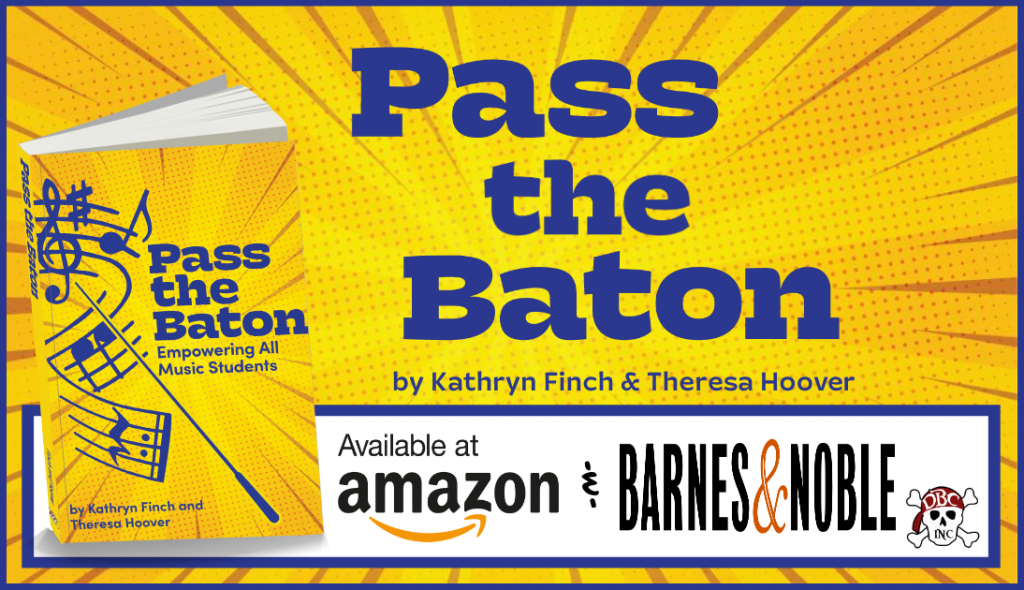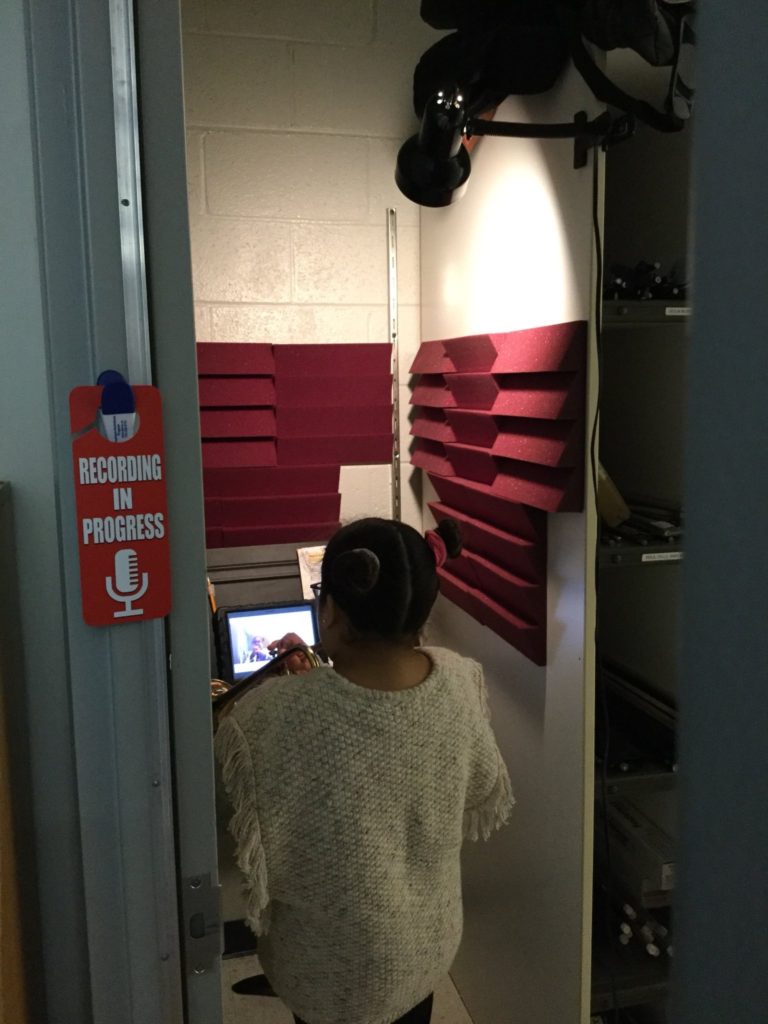Increase Ownership Through Score Study
As a band director, I love studying new pieces of music. It was one of my favorite things while working towards my master’s degree in instrumental wind conducting. I enjoy digging into a new piece to discover its nuances and details. Dedicating time to score study increases my capacity to teach the piece to my students effectively and efficiently.
Score study often comes to mind as I think about how my middle school band students can take more ownership in the ensemble. I spend countless hours studying the pieces of music the bands will play – asking questions about the parts, making musical decisions, and trying to uncover the composer’s intent – only to put it in front of the students and tell them what to do. Who is experiencing the creative process here? It isn’t the students.

For the last few years I’ve tried to find ways for students to experience this process so they can have a deeper understanding of their own parts and how they fit within the piece of music. By giving students dedicated time to dig into the music, often collaboratively with peers, I’ve found they feel more connected to it, and as a result, take more ownership when learning the piece.
Here are some things I’ve tried and discovered about having students take part in the score study process.
Study Guide
Provide a guide for students to use – this could be a worksheet or digital document they complete, or a series of questions they need to answer. Students won’t inherently know what to look for when studying a new piece of music. I will often use the STARS framework with my middle school students, having them look through the piece to find anything notable for each category.
- Sharps and flats in the key signature
- Time signature and tempo
- Accidentals
- Rhythms
- Signs, repeats, dynamics, and articulations
Also encourage students to ask questions about the music or make predictions. What sections might be tricky to learn? What skills and techniques would be helpful?
Students can start by just studying their own parts. After having that experience, older students might benefit from studying the entire score, or at least sections of it. It will depend on the comfort level and ability of your group.
Recordings
Determine how and when to use recordings. You may want students to listen to the piece first, or only after they have completed their initial study. For pieces with multiple interpretations, students can benefit from hearing these various options. This leads to great discussion opportunities, having students give their opinions on why conductors made certain musical decisions or which they prefer.
Partners and Small Groups
Consider allowing students to work with a partner who plays the same instrument, or with their entire section. Encourage dialog among your musicians as they determine what to include in their study.
After students have finished studying their own parts, give them time to meet with a partner who plays a different instrument. Each student should “teach” their partner what they learned about their parts, looking for similarities and differences between what the two instruments play.
Digital Scores
Take advantage of digital scores that are available online. Many publishers offer PDF or even video preview scores that students could access to take their study deeper. Encourage students to use these scores. Even if they can’t read all the parts, they will see what instruments are playing at the same time as them, dynamics changes, and things like that. For schools that use Smart Music, students can view parts for other instruments this way.
It Shouldn’t Be a “One and Done” Activity
After students have completed their score study, make sure the experience doesn’t end there! Refer to it often. After rehearsing the piece, allow students to make changes or updates to their original analysis. Encourage them to answer questions they might have had. Remind students that studying and analyzing music is a continual process that helps us grow as musicians.
What Does it Look Like In My Classroom?
Recently, my 7th and 8th grade band students began their first score study experience of the year. We are fully remote right now, so students attend band class twice a week through Zoom. We had sight-read the piece the week before, so it was not brand new, but there was still a lot to uncover. I put students in breakout rooms with their sections and gave them a collaborative Google Slides document as a study guide to work on. While students could have completed their study guides individually, one of my goals was also to increase collaboration and communication. For this reason, the breakout rooms made the most sense. That took about 10-15 minutes during one class period.
During the second class period of the week, I put students back in the same breakout rooms to finish their study guides. I also gave them a direct link to listen to a recording and showed them how to find other parts in Smart Music, since the piece we were working on didn’t have a digital score online. Next week, I will ask each group to share one or two things they discovered about their parts and the music as a whole.
The response from the students has been positive! They enjoyed having time to work with their peers (especially being in this digital environment) and many said they found the experience fun. The benefit to having them completing digital study guides is that I can watch as they work. Most groups were finding and recording the information I had hoped, and I was able to join the breakout room to assist if I noticed a lack of progress on the study guide.

Could I just tell students where the key change occurs? Ask them to circle the dynamic and tempo changes? Absolutely. That’s what we’ve been doing for years. But I believe the information is more likely to stick if the students discover and record it themselves. When they take ownership of the process, it becomes more valuable and more meaningful.
Interested in trying this in your classroom? Here are two Student Score Study templates:
Have you heard the news? Pass the Baton: Empowering All Music Students is now available!
“All too often the music classroom stifles students with one-size-fits-all curricula and repertoire. In Pass the Baton, authors Kathryn Finch and Theresa Hoover turn that paradigm on its head, offering a vision of music education that empowers students as critical thinkers who exercise voice and choice to question, discover, connect, and play like never before—in and out of the classroom.”
Get your copy here – Pass the Baton: Empowering All Music Students



